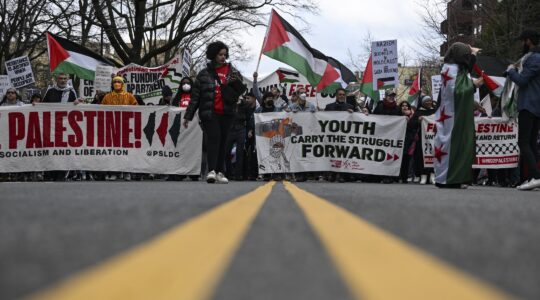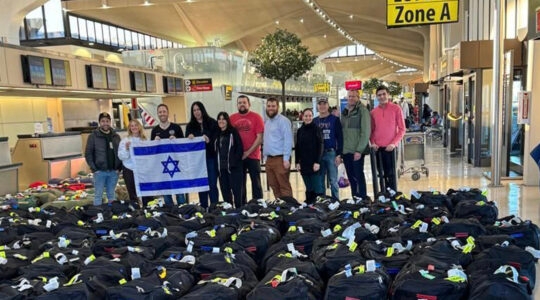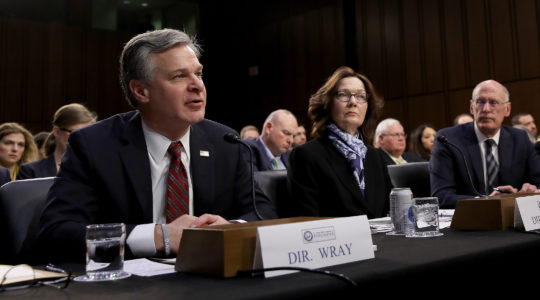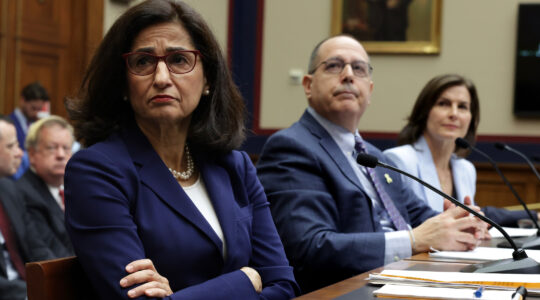NEW YORK (JTA) – Nearly 3,500 people showed up for an all-night Shavuot celebration at San Francisco’s Contemporary Jewish Museum.
Mostly in their 20s and 30s, they had come ready to shell out $15 to spend the night marking a Jewish holiday in a Jewish institution, with performance art, dancing to live bands, listening to cutting-edge authors and even studying Jewish texts.
Between 500 and 1,000 didn’t get in to the June 7 event, titled “Dawn.” Even so, it was 10 times bigger than last year’s celebration.
“Many, if not most, of the people there had never celebrated Shavuot before,” said David Katznelson, 39, who has run this dusk-to-dawn reimagining of the traditional Leyl Shavuot four out of the past five years. “And people weren’t just filling the rooms with the fun stuff. They were filling the rooms where the serious conversations were going on as well.”
Something else was going on with this overwhelmingly young, unaffiliated Jewish crowd, Katznelson says.
“There’s a thirst for Jews being with Jews and for understanding what Judaism is, and how to make it relevant to 21st century culture,” he said.
The tidal wave of Jewish cultural creativity in the under-40 crowd, and their willingness to show up for these Jewish-themed art, music, dance and literary events, has been noted for some years by Jewish communal leaders, sociologists and writers.
A new report lends muscle to certain aspects of the phenomenon hinted at by Katznelson: the desire of young Jews to be with other young Jews, and their interest in creating their own Jewish experiences rather than signing up for long-standing programs.
“Uncoupled: How our singles are reshaping Jewish engagement” is the third in a series of reports on Jews under 40 by sociologists Steven Cohen of Hebrew Union College and Ari Kelman from the University of California, Davis.
Its main findings show that young, single, non-Orthodox Jews are as proud of being Jewish and as interested in exploring their Jewish identities as their married peers. Their Jewish behaviors might differ, but not their attitudes.
Like the preceding two reports, this study uses data from the 2007 National Survey of American Jews, a mail-back and Web-administered survey of self-identified Jews. Cohen and Kelman focused on the 1,704 non-Orthodox respondents between the ages of 25 and 39 and compared singles to inmarried Jewish couples.
Their findings showed that contrary to conventional wisdom, Jewish engagement does not kick in only when young, non-Orthodox Jews marry and have children. While married Jews do show higher levels of institutional affiliation, including synagogue membership and contribution to federation campaigns, than their single counterparts, those behavioral changes occur whether or not the couples have children – another surprise for the researchers.
“The biggest behavior changes come with getting married, not with having children,” Kelman said. “Neither of us expected that.”
Also, Jewish singles are just as interested in being engaged Jewishly as their married peers, just not along institutional lines. They’re as pro-Israel, as proud to be Jewish and as likely to have many Jewish friends.
Nearly half of both groups say at least half their friends are Jewish – 42 percent of the singles and 52 percent of the couples. And 51 percent of the singles say they talk to their friends about Jewish matters, compared to 44 percent of the married Jews, while 36 percent of both groups say they talk to their friends about Israel.
Regarding Jewish identity, it’s as strong for marrieds and singles.
Fully 98 percent of the singles say they are proud to be Jews, even more than the 95 percent of the inmarried young couples. And both groups are quite pro-Israel: 86 percent of the in-marrieds and 83 percent of the singles.
“I was surprised by how proud they are and how pro-Israel they are,” Cohen said. “Frankly it’s reassuring.”
Singles, however, are not seeking out Jewish involvement along traditional institutional lines nearly as often as their married counterparts. That, Cohen says, presents a programmatic challenge to the Jewish community.
“Instead of thinking how to bring young Jews to our institutions, we should be thinking how to support young Jews in creating their Jewish lives,” he said.
One communal organization that has stepped up is the UJA-Federation of New York, which in 2006 committed $1 million in two-year grants to emerging New York-based artists to encourage them to create projects with Jewish content.
Twelve young artists received the funding via Six Points Fellowships, a collaboration between the federation, the Foundation for Jewish Culture, Avoda Arts and JDub Records.
The grant, the largest ever given by the New York federation for an artistic project, demonstrated a realization of the power culture has to serve as an entry into Jewish life for the next generation.
Rebecca Guber, the 30-year-old director of the fellowship program, says that young people “go to Jewish culture as a way to connect to themselves.”
Guber recalled that on Rosh Hashanah last year, one of the fellows, Jeremiah Lockwood, set the traditional holiday liturgy to new music using blues and funk. Five hundred young Jews showed up for his show in a historic synagogue turned secular performance space.
“These were not people who went to shul beforehand,” Guber said.
Lockwood had been trained by his father, a cantor. And his grandfather made his own cantorial debut in the same synagogue in 1949, providing a physical as well as cultural link to the space.
“When Jeremiah blew the shofar, there was silence,” Guber said. “It was a real feeling of power.
“For many people, this was their Rosh Hashanah experience. And for us, it was a very clear demonstration of the thirst for alternative ways to experience Judaism among people who won’t step into synagogue.”





